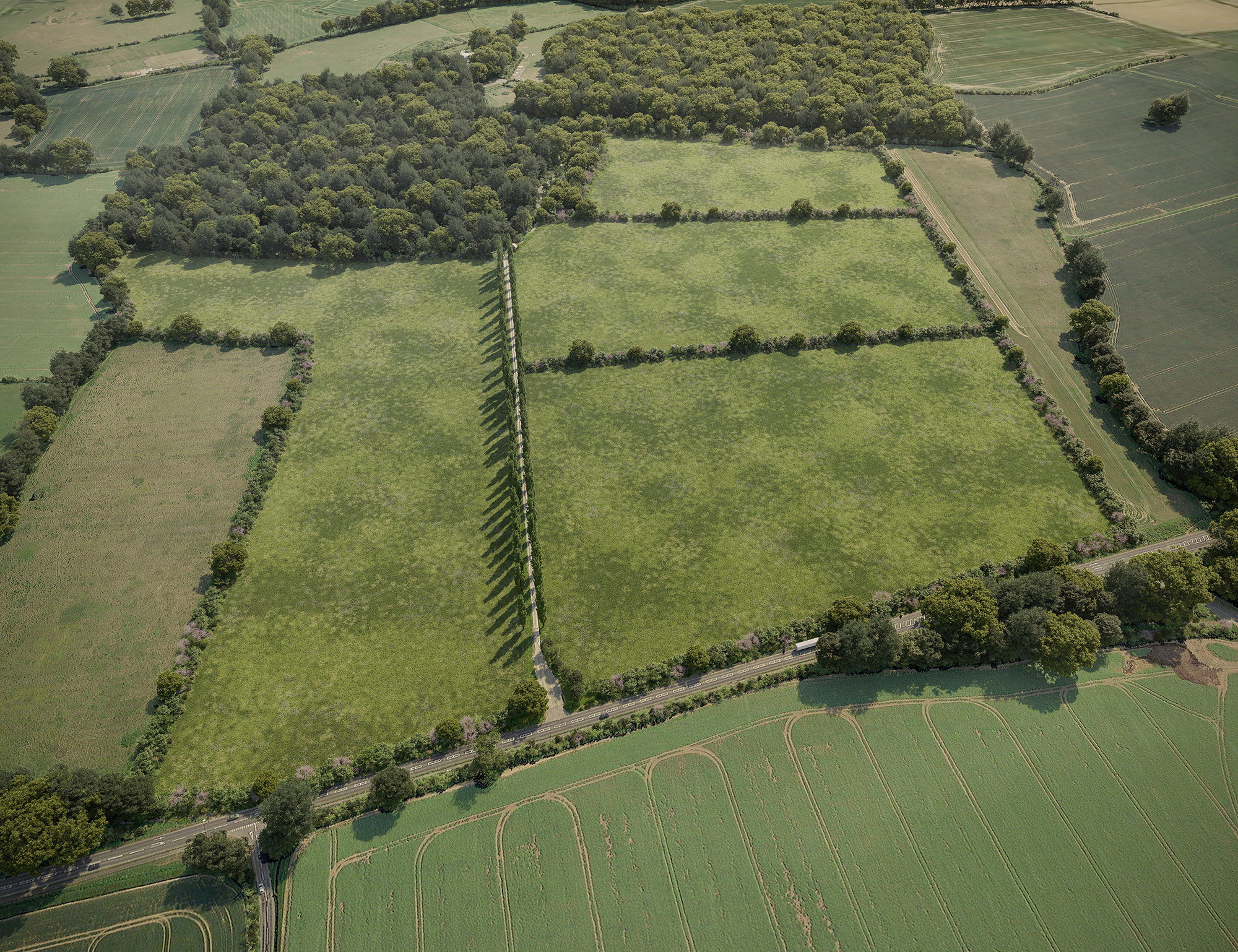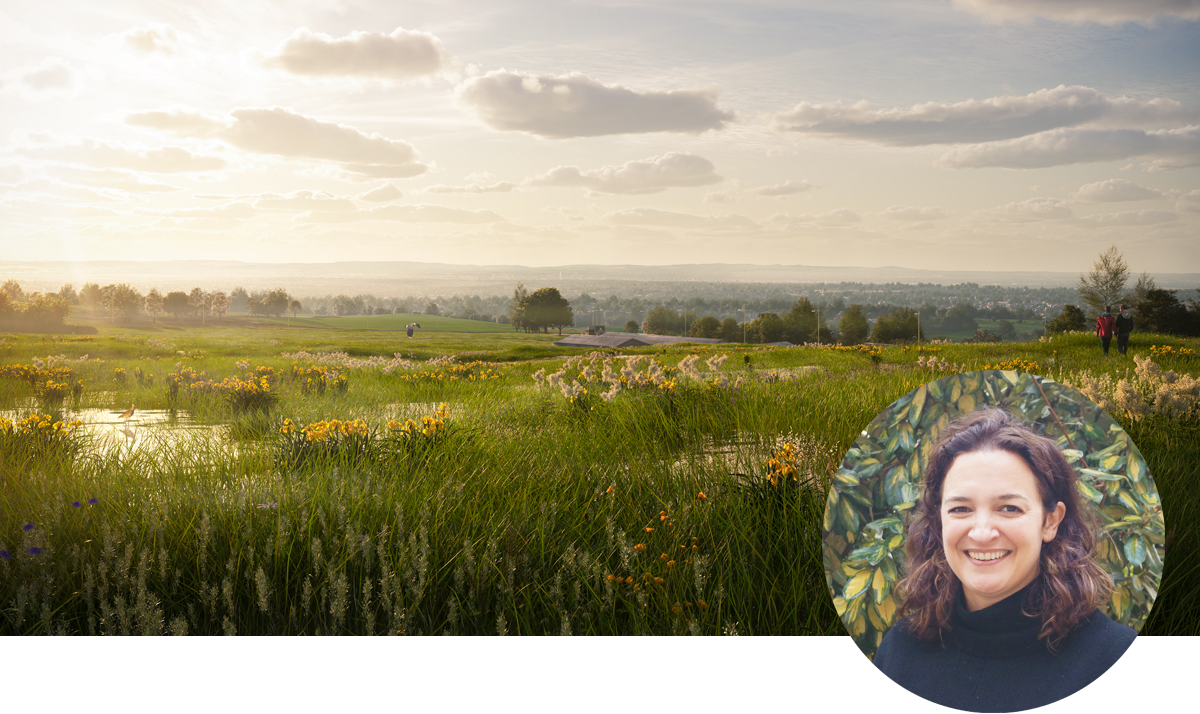Delivering the best outcomes for nature with Biodiversity Net Gain
The two-year phasing-in period of the Environment Act’s biodiversity net gain (BNG) legislation comes to an end in November 2023, which means developers must leave an area of land more ecologically diverse than it was before development commenced. It’s an issue all developers must address for nature recovery or risk planning permission being denied, states ecology director for Environment Bank Emma Toovey.
Above: A 49-hectare Habitat Bank in Greater Manchester
The simple requirement to increase measurable biodiversity from a development proposal in the round by a minimum of 10% according to a habitat-based metric set out by DEFRA, provides developers with an opportunity to help restore and reverse the damage done to the environment before it’s too late. In the last five decades alone, the UK has lost 60% of its biodiversity. So what are the best outcomes for nature – and what are the options available to developers, and those environmental consultants advising them on BNG?
Sustainable Development
BNG is already being implemented within many Local Planning Authority (LPA) areas across the UK to minimise biodiversity loss, ensure an overall gain in biodiversity value and enhance green space and biodiversity in all developments for the benefit of those who live, work and play in them. This is achieved by making developers consider carefully how intelligent site layout can do this without losing property density and therefore profits.
With development pressure on land across England being at an all time high, maximising the developable area is critical and finding a balance between green space and urban footprints is a constant challenge.
BNG and the mitigation hierarchy are powerful tools for minimising the ecological impacts of development while unlocking and enabling sustainable development.
Through establishing a national network of Habitat Banks, Environment Bank has launched BNG Units – a pioneering product that enables effective compliance with mandatory BNG requirements by providing nationwide access to offsite Biodiversity Units which are available to developers across the UK.

A 38-hectare Habitat Bank in Milton Keynes – pre-established

Established
What are the options?
Particular problems are often anticipated in urban areas where demand for development is high and opportunities for onsite BNG provision are more limited. Although there will be no limit on how far away offsite provision can be from the development site it relates to, the Biodiversity Metric multipliers incentivise local delivery of BNG in accordance with the mitigation hierarchy – local being defined as within the LPA or NCA (National Character Area).
Habitat Banks enable the establishment of secured, landscape scale sites where high-quality semi- natural habitats are created and restored to compensate for the ecological damage resulting from land-use change. In line with best practice ecological principles, Habitat Banks offer bigger, better and more joined-up nature recovery solutions thereby ensuring the best outcomes for nature.
Ecology director Emma Toovey said: “Whilst there is no ideal size for a quality habitat creation site, they are most impactful when delivered at scale. For Environment Bank, this is between 20 and 100 hectares. These sites are ideally located where they meet wider nature recovery objectives, bringing improved connectivity across the landscape and bolstering existing priority habitats. We fully support access to nature but this is carefully managed on our Habitat Banks to minimise disturbance and allow more sensitive biodiversity to flourish.
“We are investing over £220m into these amazing places to enable nature to recover and thrive, as well as to provide much-needed investment in rural communities. We can then use the BNG rules to turn these habitats into a ready supply of BNG units that housebuilders are already using to deliver their BNG requirements.
“It’s a simple model that allows the developer to pay and walk away ‘risk free’. It is fully compliant with planning rules and offers supply and cost certainty to the developer, and it’s our belief that the costs of transforming the plight of nature in this country is less than 0.5% of the overall project value of a typical development.”
A robust solution to BNG
Toovey added: “BNG is enabling a private market that brings economic visibility to biodiversity restoration that delivers brilliant ecology outcomes alongside providing solutions to tackle the housing shortage, for example.”
Environment Bank estimates there could be demand for as many as 6,200 offsite BNG Units each year, with an estimated market value of £135m. The price of each BNG Unit has been estimated at £20,000-25,000 – depending on the size and type of development.
Having recently reserved BNG Units from Environment Bank, Mark Pendry, head of sustainability at Legal and General Modular Homes, said: “It is advantageous for a developer to engage an ecologist early in the design process to mitigate against habitat loss in the first place but also to maximise potential habitat gain post-construction.
“We will always look to maximise the protection, retention and enhancement of onsite habitats. To achieve this we now look at BNG Units at the earliest stage possible – often before we even purchase a site.
“However, we are not always able to achieve net gain through onsite measures alone, so being able to source BNG Units now gives us the ability to ensure we can develop our housing sites in a way that results in an overall gain in biodiversity.”

